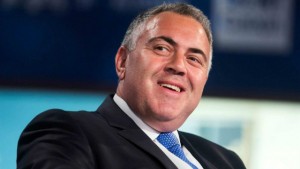Home » Commentary » Opinion » Bracket creep reform: What are you waiting for, Hockey?
· ABC The Drum

Addressing the problem of stealth income tax increases is crucial for a Government wishing to focus on jobs and growth. That’s why the Treasurer shouldn’t delay, writes Michael Potter.
Treasurer Joe Hockey has made a speech pushing the case for income tax reform, arguing that the existing tax system is reducing Australian’s income, cutting incentives to work harder and invest, and reducing financial security.
These are all welcome sentiments.
We should particularly welcome the Government’s focus on addressing bracket creep – which is when individuals pay a greater proportion of their income in tax as a result of inflation and wage increases.
As Mr Hockey rightly argues, this is a stealth tax increase. Mr Hockey states that if nothing is done, bracket creep will lead to a massive increase in the number of taxpayers in the top two marginal tax brackets: currently 27 per cent are in these two brackets, but this is forecast to leap to 43 per cent in 10 years’ time. And bracket creep is forecast to increase personal taxes by $25 billion over the next four years.
Among its many adverse impacts, Mr Hockey highlights that bracket creep harms innovation, hinders efforts to increase workforce participation, and makes Australia less competitive with other countries in the region including Hong Kong, Singapore and New Zealand. Modelling by the Commonwealth Treasury finds the adverse impact on the economy of higher income tax is substantial: every extra dollar of income tax revenue costs the economy around 20-25 cents (depending on assumptions). And this modelling doesn’t include the adverse impact of higher income taxes on innovation (that is, it does not include dynamic effects).
So addressing bracket creep is crucial for a Government wishing to focus on jobs and growth.
The Treasurer’s comments on funding for tax reform are also welcome. He has committed to “continued discipline” on spending. This is a welcome statement, and the Government should be encouraged to continue its efforts on this front. The Centre for Independent Studies has made many suggestions that could assist them with that aim.
However, while the Government has emphasised the importance of lower personal taxes before, we have yet to see delivery, at least in the personal tax space. The Government has abolished the mining tax and the carbon tax, but its rhetoric on reducing taxes has been confused by a (temporary) increase in the top marginal tax rate, a number of measures to broaden the tax base, and ongoing stealth tax increases through bracket creep.
The Treasurer has indicated that it is “unappealing to dress up increased tax and spending as tax reform”. However, we have recently seen an agreement of all treasurers (Commonwealth, State and Territory) to impose the GST on more online purchases. And these treasurers are in ongoing discussion on options to increase the GST or the Medicare Levy.
So there is legitimate concern the Government is sending mixed messages about the direction of tax reform.
There are also some issues to raise about delivery. The Treasurer’s speech is an announcement that the Government is going to make an announcement about presenting options for tax reductions; then make another announcement about which option it will choose; then (probably) take this option to the election; then present the legislation to implement this tax reform in the following Parliament. There are many steps between today’s speech and addressing the actual problem.
If bracket creep is as important as the Treasurer argues, then this also makes a case for more speedy action.
Bracket creep reform: What are you waiting for, Hockey?